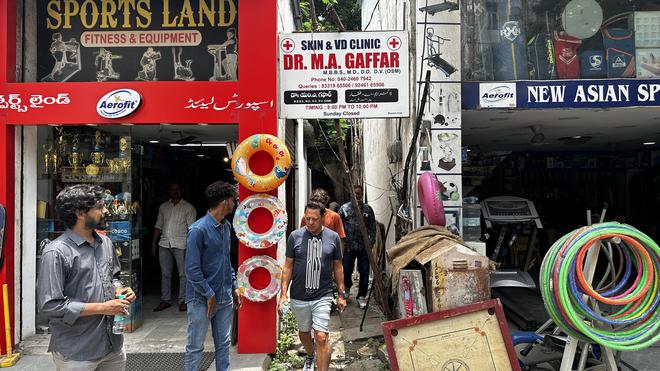It took two years, some luck, and dollops of providence for Maxime Knudsen to discover the graves of his great-great-great-great-great-great grandmother, Fayz un Nissa, in Hyderabad. The six graves of his grandfather and his family were easy to find at the cemetery attached to St. George’s Church in the Abids area. They have been restored after an eight-year effort by a conservation architectural firm.
“But the hunt for the grave of Fayz un Nissa was like something from Indiana Jones, as I carried a sling bag and roamed the various cemeteries in Hyderabad,” says Mr. Knudsen, a financial analyst from Abu Dhabi, who is in the city searching for the graves of his storied family in Hyderabad.
A part of the process of the hunt is author and historian William Dalrymple, who is helping Mr. Knudsen locate the graves. Fayz un Nissa or Fayz Baksh, as she is sometimes known, has found mention in the latter’s book The White Mughals. She was adopted by Mughal emperor Shah Alam-II, who reigned from 1759 to 1806, and was married to General William Palmer. The couple settled down in Hyderabad after stints in Lucknow, Gwalior, and Pune. The book devotes a couple of pages to the couple and shows the luminous 1786 painting titled The Palmer Family, by artist Johann Zoffany.
By providence, a cab operator showed an interest in Mr. Knudsen’s hunt. He was carrying with him the 1914 Leonard Munn map of Hyderabad that referred to a certain Palmer’s Tomb on the Troop Bazaar Road.

“I met Mohammed Ali Khan who managed the transport for me during my visit to Hyderabad in 2017. I brought all my papers and showed it to him so that he could help. He reached out to a friend in the Waqf Board, and sure enough I reached a 3-foot wide passage at the end of which was an arch and within it three graves. The ornate one was that of Fayz un Nissa begum,” says Mr. Knudsen, spreading out the family tree and explaining his lineage.
The couple had six children. Mr. Knudsen is a descendant of their son, Dr. Harry and grandson Major James Edward who had 12 children and adopted one boy. Another descendant, Edward Palmer, set up the first Indian restaurant in London in 1926, called Veeraswamy, which still exists.
Fayz un Nissa is buried under a 12-metre x 12 metre skylight. The outer walls have decorative motifs and minarets inspired by the Qutb Shahi architecture. Completed in 1828 when she died, the tomb has three other unmarked graves. Her husband pre-deceased her in Calcutta. The 1785 painting in Mr. Dalrymple’s book shows the family with her dressed in traditional clothes surrounded by three small children with her husband General Palmer in a soldier’s dress affectionately looking on. There are four other women in Indian attire in the picture too.
“I first saw the will of General William Palmer in the British Library when I was 14. I wanted to tear up the page and take it home. Now I realise it would not have been such a good idea,” says Mr. Knudsen, laughing.
Mr. Knudsen is now planning to restore the three graves. “The building is in a good shape as it is mostly built with stone. There are no structural issues except for vegetal growth,” said Lithish Wesley, a conservation architect engaged for the job.
Once the tomb is restored and made accessible, Hyderabad will have a landmark that will connect Bank Street with Residency Building where William Palmer built and lost his fortune.







